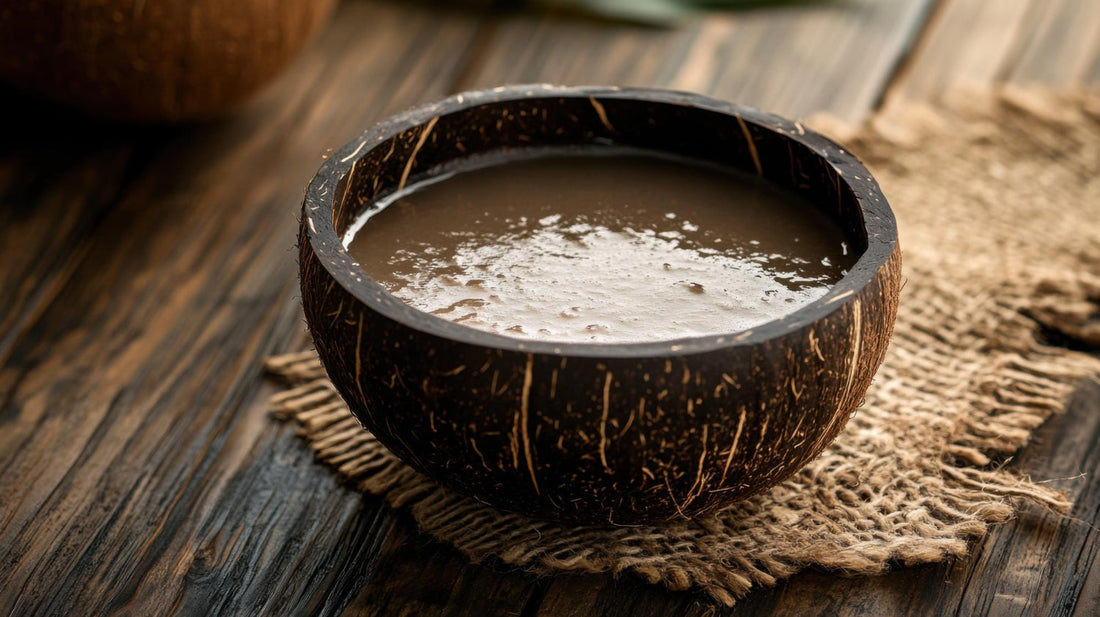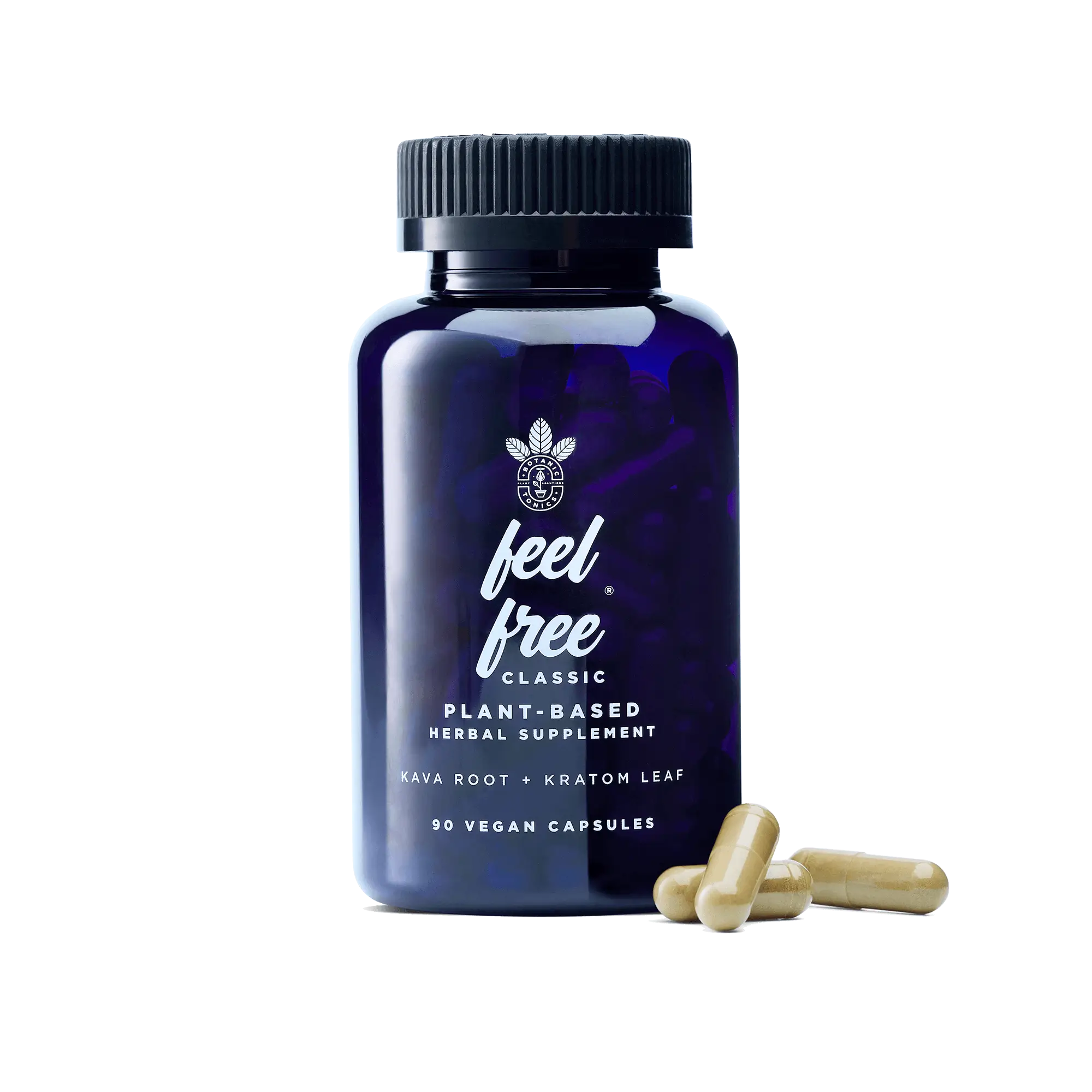How to Prepare Kava: A Step-by-Step Guide
Kava: the little-known root that may help you finally relax in a healthy way.
Bevvie drinkers in the West are catching onto the mystical properties of the South Pacific-growing pepper plant (Piper methysticum, for you nomenclature fans). Traditional kava has been used for centuries in countries like Fiji and Samoa to boost focus, improve clarity, and help boost mood. What makes kava so “mystical” is its ability to work as an alternative for coffee, or other energy drinks, without the buzz that comes from either. Learn more about kava and coffee to discover how they compare.
If you’re one of the millions of people whose head has been turned by the idea of traditional kava, you’re in luck—it can be made at home, just like your favorite Earl Gray.[1]
If you’re looking to roll up your sleeves and learn how to prepare the best kava the old-fashioned way, get ready for a simple routine that will add just a few minutes—but a whole smattering of good vibes—to your day.
Prepare Kava with These 5 Simple Steps

If you’re wondering, is kava healthy? The answer is yes! Let’s dive into how you can incorporate it into your daily routine. Before you begin, it’s worth glancing in those kitchen cabinets and checking to make sure you have all the equipment you need:
- A medium or large mixing bowl
- Warm water
- Kava root powder
- A strainer bag
Note that the kava strainer bag is going to help you extract the good stuff from your kava root, without getting excess particles in your tea. A bag made of muslin is the usual go-to method here, but your kava tonic will turn out just fine if you use cheesecloth or a thin, non-toxic material like a cotton rag.
Without further ado, here are our steps for preparing kava tea:
- Measure your ground kava root powder into your strainer bag. A cup of tea for one usually requires about 2-4 tablespoons of medium-grind kava, depending on the strength you’re going for.[2] That said, we recommend reading your labels as legitimate manufacturers will usually make a point of providing guidelines around the dosage.
- Place the bag in your medium bowl and add 8-12 ounces of hot water (not boiling water). Too cool, and it’ll take some extra arm muscle to get the mixture emulsifying, but water that’s too hot could negatively affect the kava taste. Here, the Goldilocks mentality of “just right” will go a long way.
- Allow the kava to steep. It’ll need about ten minutes, so set a timer, kick back, and prepare for the hard part. (Don’t worry, it’s not that hard.)
- Once your mixture has had time to rest, grab the bag by its top and twist until there’s no excess material or air. When it’s just you and your kava, begin kneading the root in the bag with your hands and knuckles. Doing this enough will allow the liquid to strain into the kava bowl. This part can take anywhere from 5-10 minutes, so put on a favorite playlist and enjoy the process.
- When you’ve wrung as much liquid as you can from your kava bag, you should be left with a light-chocolate brown kava in the bowl. Preferences for a kava tonic range—try it at room temperature and cooled to see which you enjoy more. You can also add coconut milk or a number of other flavors for taste.
Making Kava in Half the Time

If you want to imbibe your kava a few hours before your first morning meeting but you’re not exactly a morning person, worry not. Kava preparation can be easy, and you’ll be having kava tea in no time with a quick trick—all you need is your kava powder, some water, and a blender.
- Place 2-4 tablespoons of kava in a blender, along with 8-12 ounces of water. Since the blender is going to do the hard part for you, you don’t need the water to be warm.
- Blend on high for 3-4 minutes until the powder has dissolved in the water.
- Enjoy.
This kava recipe is so quick, even the directions took less time to read.
Traditional Way to Brew Kava
Kava, a root native to the Islands of the South Pacific, has been utilized in traditional ceremonies for centuries, with specific rituals that may seem unconventional to other cultures.
The traditional method required these virgin female participants to chew the kava roots until thoroughly mashed into a pulp. This unique process involved spitting the masticated pulp onto a leaf, followed by pouring water over the leaf to extract the Kava essence. The resulting liquid, derived from the freshly chewed kava, was consumed by the natives before island ceremonies and rituals.
The intention was to create a calming effect, promoting a positive atmosphere and preventing potential tensions or conflicts during the gatherings.
What Does Kava Taste Like?
Kava possesses a unique and distinct taste. Often described as earthy and peppery, the flavor profile of this herbal supplement can be an acquired taste for some.
The initial sip may reveal a slightly bitter undertone, similar to the essence of freshly ground black pepper, followed by a subtle numbing sensation on the tongue—a characteristic known as "kava tongue." Despite its earthy notes, some connoisseurs appreciate the complex taste of kava, which is influenced by factors such as the kava cultivar, preparation method, and regional variations.
While its taste may not be universally appealing, many enthusiasts find the ritual and potential relaxation benefits of kava consumption to outweigh any initial reservations about its distinctive flavor.
How to Improve Kava’s Taste
Although kava can be an acquired taste, elevating the flavor of your kava brew is easy with a few strategic adjustments. Here are some tips for how to make kava taste better:
- Experiment with Strainer Materials: Opt for a high-quality strainer bag like a muslin bag or a similar material to refine the extraction process, ensuring a smoother and purer kava liquid. The right strainer can significantly reduce the presence of unwanted particles, contributing to a cleaner and more enjoyable taste.
- Add Flavorful Enhancements: While some kava consumers may appreciate the simplicity of plain kava, experimenting with additions like coconut milk or other natural flavors can elevate its flavor profile. These ingredients introduce new dimensions to the flavor and allow you to tailor your kava experience according to personal preferences.
- Consider Temperature Control: Pay attention to water temperature during the brewing process. Using water that is just right—warm but not boiling—can impact the taste significantly. Finding the best temperature ensures it blends well without compromising the delicate kava flavor to provide a well-balanced and enjoyable beverage.
By incorporating these specific methods, you can refine the taste of your kava brew, turning each sip into a more pleasurable experience.
How Much Kava Do You Need to Feel It?
Because modern consumers often use kava as an alternative to coffee —before, during, and after the workday—one of the most common questions from newcomers is, how much kava should I take?
This is a slightly tricky question to answer, as it depends on many factors like:
- Your personal interaction with kava
- The form of kava you take (tea vs kava capsules, for example)
- Why you’re taking it
Generally speaking, the dosage that most people can “feel” is one serving. So be sure to read the nutrition label and source your kava from a reputable company—whether that’s in the form of a capsule or tincture.[3]
Enjoy Kava the Hassle-Free Way

Preparing kava can be a nice addition to your morning when you need it, a soothing moment of self-care before the storm and stress of the office. But not everyone looks at it that way. For some, heating up warm water, measuring out ingredients, and mashing up a muddy-looking mixture by hand is not a relaxing way to start the day.
When you don’t have time to lovingly prepare your kava tea, skip the steps and still get the focus you need by taking kava in the form of a capsule or tonic.
Our feel free capsules and feel free CLASSIC tonic are made with quality kava kava that is quality tested, and made in the USA. They provide all the benefits without the time-consuming kava preparation process in the morning. Plus, they can fit in your bag for kava on the fly.
feel free with Botanic Tonics.
Sources:
- The New York Times. Stressed New Yorkers Take to Kava, ‘Nature’s Xanax.’ https://www.nytimes.com/2017/12/21/nyregion/stressed-new-yorkers-take-to-kava-natures-xanax.html
- Perfect Brew. How To Make Kava Tea.
-
The Kava Society. What is the right amount of kava? https://kavasociety.nz/blog/2018/2/5/what-is-the-right-amount-of-kava
















